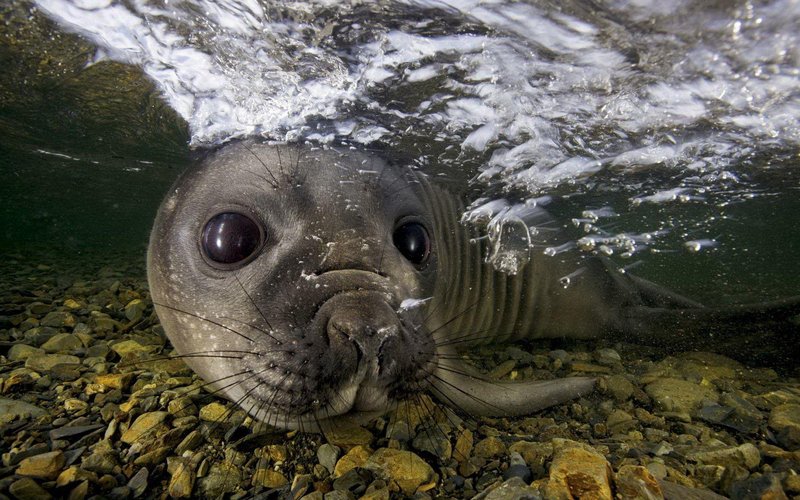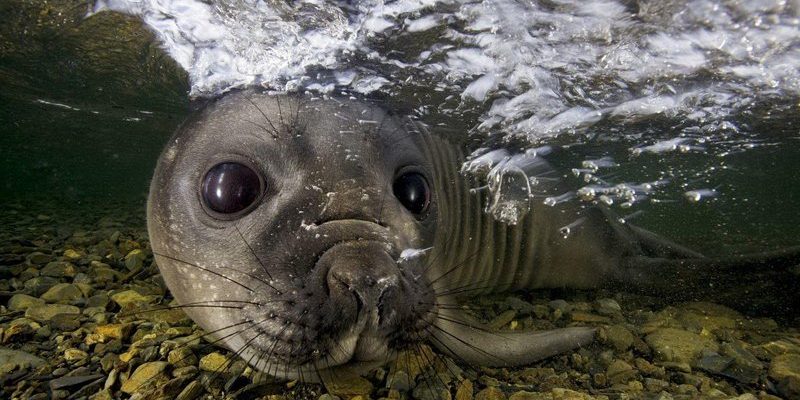
From their impressive swimming abilities to their unique social behaviors, seals have some interesting traits that set them apart in the animal kingdom. So, grab your favorite snack and let’s dive into ten cool things about seals that you probably didn’t know!
1. Seals Are Super Swimmers
First off, let’s talk about how seals swim. Honestly, they’re kind of like the Olympic athletes of the sea! With their streamlined bodies and strong flippers, seals can reach speeds of up to 25 miles per hour. That’s quick! To put it in perspective, your average swimmer might hit a speed of around 3 miles per hour. Seals use their powerful front flippers for propulsion while steering with their back flippers, almost like they’re using a built-in navigation system.
Here’s the thing: seals don’t just swim fast; they’re also incredibly agile. They can dive deep into the ocean to hunt for food, with some species plunging down over 1,500 feet in search of fish or squid. Imagine holding your breath and going that deep—talk about impressive!
2. They Have a Unique Communication Style
Seals are known for their vocalizations, and their “talking” is more than just cute sounds. Every species has its own unique calls, which can range from grunts and barks to whistles. For instance, harbor seals are known to make a variety of noises that can be heard from miles away. It’s like their own secret language!
You might be wondering how they manage to communicate underwater. Seals use sound waves that travel easily through water, allowing them to convey messages even when they’re deep below the surface. This is especially important during mating seasons or when mothers are calling their pups.
3. There Are Different Types of Seals
Believe it or not, there are around 33 different species of seals! They can be broadly divided into two categories: phocids (true seals) and otariids (eared seals). Phocids, like the common harbor seal, lack external ear flaps and often have blubber-heavy bodies, while otariids, like sea lions, have external ear flaps and can often be seen “walking” on land using their flippers.
Each type exhibits different behaviors and habitats. For instance, while eared seals are social and often gather in large groups, true seals are typically more solitary and prefer to haul out on ice or rocky coasts. Picture a bustling beach filled with sea lions versus a quiet rock ledge with a lone harbor seal soaking up the sun.
4. Seals Have Amazing Vision
Seals’ eyes are nothing short of remarkable. They have excellent vision underwater, which is essential for hunting. Their eyes can adjust to low light conditions, allowing them to see clearly in the depths of the ocean. Plus, their corneas are shaped differently than ours, helping them focus better when submerged.
If you’ve ever tried reading underwater, you know how difficult it can be! Seals, however, are equipped to spot their prey with ease. It’s like they have built-in underwater goggles, giving them a distinct advantage when hunting in deep waters.
5. Seals Have a Special Relationship with Humans
Throughout history, seals have had varied relationships with humans. In some cultures, they are revered and respected as important animals, while in others, they’re viewed as a resource. In places like Alaska, seals are integral to the Inuit way of life, providing food, clothing, and tools.
Interestingly, seals have been known to form bonds with people. There are countless stories of seals following fishermen or interacting with humans on the shore, showing a certain level of curiosity. This friendly behavior can be a reminder of the unique connection we share with marine life.
6. Their Diet is Quite Varied
Seals are carnivorous and their diet is surprisingly diverse! Depending on their species and habitat, seals may eat fish, squid, crabs, or even small mammals. For example, leopard seals have even been known to hunt penguins! They rely on their keen eyesight and agile swimming skills to catch their prey.
Here’s an interesting fact: seals can consume around 2-3 times their body weight in food each day! That’s like you eating enough pizza to fill your living room. This high caloric intake is necessary to maintain their blubber, which keeps them warm in icy waters.
7. Seals Are Expert Divers
When it comes to diving, seals are champs! Some species can hold their breath for up to 30 minutes at a time. This ability is essential for hunting and escaping predators. They have a unique physiology that allows for more efficient oxygen use, so they can dive deeper and longer than most mammals.
Take the Weddell seal, for example. It can dive for more than an hour and reach depths of over 2,000 feet! That’s deeper than most scuba divers go! It’s a pretty stunning feat, showcasing their adaptation to life in challenging ocean environments.
8. They Have an Adaptable Communication Method
Seals also have an interesting way of interacting with each other. While they use vocal sounds for long-distance communication, they also rely heavily on body language. Whether it’s a quick flick of their flippers or a specific movement, seals convey a lot without making a sound.
This adaptation helps them in social situations, especially when they’re on land. You might notice them nudging each other or rolling in the sand to establish dominance or attract mates. It’s a fascinating mix of vocalizations and gestures that keeps their social structure intact.
9. Seals Are Vital to Their Ecosystem
Seals play an important role in maintaining the balance of their ecosystems. As predators, they help control fish populations, which in turn affects the overall health of the ocean. Their presence indicates a healthy marine environment, which benefits many other species as well.
Additionally, seal populations can influence the dynamics of their habitats. For instance, their feeding habits can affect the distribution of prey species, leading to shifts in the entire marine food web. So, when we think about seals, we’re not just looking at cute animals; we’re seeing a crucial piece of the ocean puzzle.
10. Conservation Efforts Are Essential
With all these amazing traits, it’s essential to recognize that many seal species face threats, primarily due to human activities. Climate change, habitat loss, and pollution are just a few challenges they encounter. Conservation efforts are vital to ensure their survival.
Organizations worldwide work tirelessly to protect seals and their habitats. This includes everything from establishing marine protected areas to advocating for cleaner oceans. As individuals, we can help, too, by supporting conservation efforts and being mindful of our impact on the environment.
Seals are much more than just charming marine mammals; they’re incredible creatures with unique adaptations that deserve our admiration and protection. Each fact about them can deepen our appreciation for the natural world and inspire us to take action in preserving it.
In conclusion, seals truly are fascinating animals. From their impressive swimming skills to their unique communication methods, there’s a lot to admire. Understanding these traits helps us appreciate their role in our ecosystem and underscores the importance of protecting them for future generations. So the next time you see a seal lounging by the shore, remember—there’s a whole world of cool facts behind those big, curious eyes!

